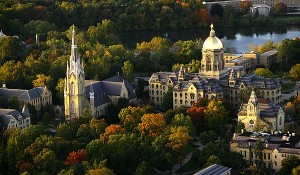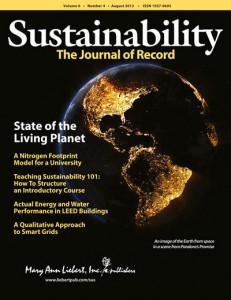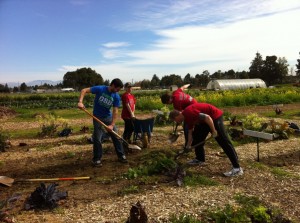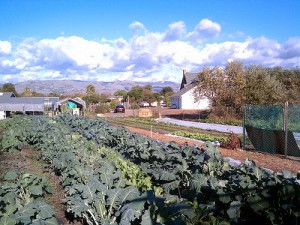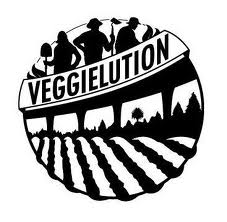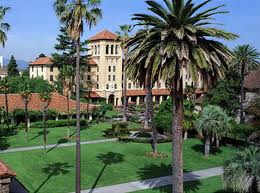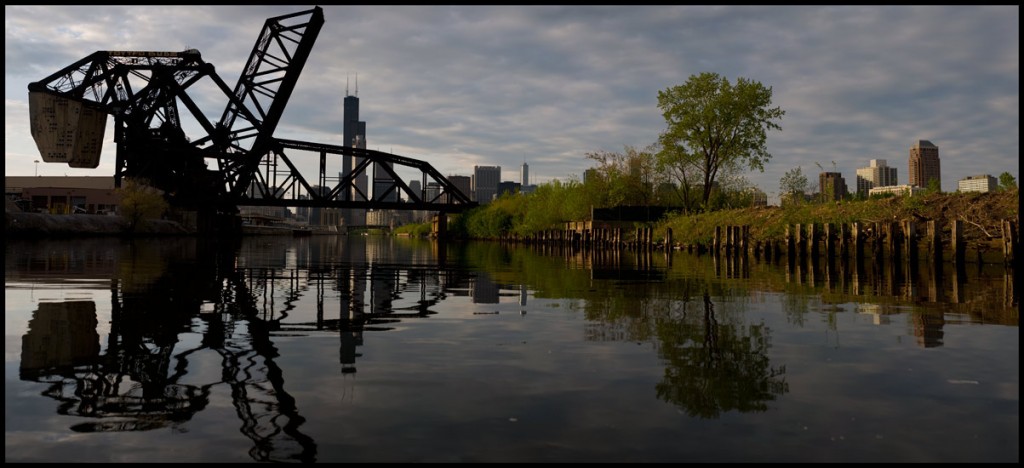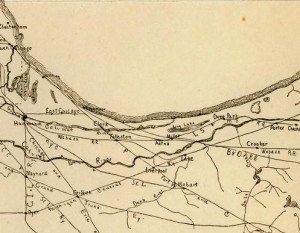Yesterday afternoon I arrived in Eugene, Oregon, for the Sustainable City Year Program conference — the 3rd such gathering held annually at the University Of Oregon. I’m on a fact-finding mission to learn how the five-year-old SCYP got started at U of O, get insights from other colleges and universities who have started their own versions of the program at their institutions, and bring back good ideas to potentially implement at Roosevelt in Chicago.
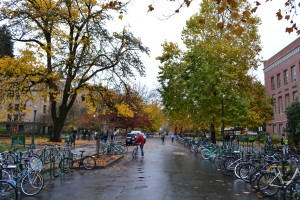
I’ve already met some fantastic and interesting people here in Eugene, where we’re comfortably appointed at the downtown Eugene Hilton, and greatly anticipating today’s workshops and discussions. This gathering is rather small — more like a workshop than a conference — so I expect to get to know almost everyone in the group fairly easily in what will be three days of vigorous discussion and socializing. There are folks here from all across the US and even abroad (the Centre Transnational de Recherche Gabon), and it’s a nice mix of academics like myself as well as city professionals and officials — since the point of this program is connecting academic service learning to urban sustainable development in particular communities. But as far as I can tell, the only other folks from IL are a group from Augustana College in Rock Island; so I’m the sole participant from the Chicago Region. (That makes me rather happy, actually.)
According to By Nicole Ginley-Hidinger writing for the SCI blog, here’s an overview of the three-day conference:
A lot of student work goes to waste. After brilliant plans, layouts, and other assignments are turned in for a final grade, the reports, essays, and drawings are crammed into the back of a closet and forgotten about. SCYP changes that by creating a partnership between the University and a nearby city. Students get the chance to pitch ideas on real-world projects while cities get a wide array of proposals that they can incorporate into the development and growth of sites and programs.
Institutions in over ten states have now implemented SCYP, adopting the program and crafting their own innovative approach. During April 16-18, many of these schools will converge in Eugene to share ideas and teach other universities interested in developing their own program during the SCYP conference.
The three-day conference includes SCI faculty who will discuss the Oregon model, panels made up of cities Oregon has worked with, cities other universities have worked with, and panels of program coordinators and faculty who will address how the format can be adapted and utilized in different locations.
During the 2014 SCYP Conference, scheduled for April 15-18, the University of Oregon, will share tactics to creating a successful program centered on sustainability with the help of SCYP-like programs across the nation.
“The conference is huge,” says SCI co-director, Marc Schlossberg. “The conference will give new programs all of the context, and the nut and bolts, of how a program like this is organized, how it can be effective, and how to navigate through the system of cities and universities to get something done and organized.”
The SCI staff will share everything, from inspiring moments like the support they receive from the city staff and community to the more difficult aspects, such as not being able to find a city last year.
The three-day conference includes the SCI “program how-to”, where the Oregon model is broken down into city, student, and institutional engagement. The model is explained through presentations and discussions with cities Oregon has worked with, cities other universities have worked with, and panels of program coordinators and faculty who will address how the format can be adapted and utilized in different locations.
“There’s been schools around the country that have been interested in this type of work and to this scale,” says SCI co-director, Nico Larco. “They have an interest in developing programs that are similar. We have all these different adaptations of this model.”
SCI wants to share that their model is versatile and can be implemented at any school, no matter the size or the type.
“The basic idea is that it takes advantage of classes that are already being taught in the university and leverages them in a different way,” says Schlossberg. “It can work anywhere there’s students, courses, and faculties.”
The main goal of the conference is to help schools build programs that take advantage of the resources that they already have to help the communities around them. In SCYP programs, classes help address vital community issues, such as climate change, minority outreach, and how to handle limited fiscal resources in conjunction with a community need for fresh ideas that are from a neutral source.
“Students are demanding applied learning opportunities and to make an impact in the world now, while they are students,” says Schlossberg. “We have idea-generating machines in students, classes and faculty, so if we’re going to make any progress at all on these big vexing multi-disciplinary problems in a community, the university should be active in addressing them.”
The first day of the conference will focus on schools that are interested in developing a program of their own. The University of Oregon is the sole presenter and will teach curious schools the ins-and-outs.
“[It’s on] everything from how you structure within the university, like the faculty, to how you structure things within the city, like contracts, the schedule throughout the year, and the breath and depth of the projects” says Larco.
The second day is focused both on schools who already have programs and schools who want to build them. The discussions will center on engaging faculty, students, budgeting issues, funding issues and different ways to work with cities.
It will feature schools who have adopted the program and implemented it in unique and innovative ways, from the Oregon model where all thirty classes focus on one community to other campuses who engage with several communities at one time.
The third day is focused on developing a national network of SCYP programs and how universities can go after funding and develop together.
“We are interested in changing the way higher education is delivered in this country,” says Schlossberg. “The more people that are engaged in that endeavor, the stronger the message is.”
This is the third year the University of Oregon will put on the SCYP conference. The 2014 SCYP conference strives to share how to create an effective program while building a peer to peer network of institutions who are ready to improve the higher education model.
